If you are thinking of getting chickens and want to know what it takes to keep them, this article will give you the daily to weekly maintenance.
Whether you already have chickens or are thinking of getting them, you need to know the daily to weekly maintenance they require. When you get your chickens, you will need;
Once you have your chickens you can start spending time with them and taking care of them. The first thing you do every morning is let them out of their coop, whether you decide to let them free range or if they are going to stay in a run. They will be up as soon has the sun rises and will be ready to start their day. as soon has you let them out, they will need clean fresh water and feed.
Depending on your weather, you might need to change their water a few times a day, for example, if it's cold outside their water may freeze. And in the heat, they will drink more water, which they run out of more quickly Also, if it is hot outside the water may become too warm to drink and will need to be changed to fresh cool water. And when you feed them be sure to give them enough feed so the whole flock has enough. Avoid letting the feed get wet, it will get moldy. Never feed your flock feed with mold in it.
After about a week you will find that your waterers will start growing green algae inside. You will need to scrub your waterers with soap and water at least once a week, you may need to do it sooner if you find algae growing. The next thing that will need cleaning is the coop. Cleaning the coop is necessary to a healthy flock. Clean the coop every week or two, don’t wait longer then two weeks to clean the coop. Get all the poop off the roosting bars, clean out the laying boxes, rake up the poop and bag it up or make a compost pile. You will want to deep clean your coop every month or so.
An important thing to give your chicken access to is a place to dust bathe. Chickens love to get their feathers in the sand. It is a way that they get bugs, like mites, off them, and is necessary for a heathy flock. They like to dust bathe in places with loose dirt, with sunshine and shade.
Another important thing to do is to give your flock a health check up every couple of weeks. Here are some things you can look for:
These are some of the key things to maintain a heathy flock, and know you should be ready to get your chickens!

photo credit: @Felixr1998

photo credit: @Felixr1998.

photo credit: @ChocolateWingTheRooster

photo credit: @slordaz

photo credit: @Mvan42.

photo credit: @Mvan42

photo credit: @Mvan42

photo credit: @Julesstarohio56

photo credit: @chrissynemetz
Whether you already have chickens or are thinking of getting them, you need to know the daily to weekly maintenance they require. When you get your chickens, you will need;
- A chicken coop with enough room and nesting boxes for your hens to lay their eggs. For the roosting bar you will need at least 4sqft per bird, the more room the better. Make sure that the coop is safe from predators.
- You will also need waterers and feeders. You want to have enough for your whole flock to insure they always have access to water and feed.
Once you have your chickens you can start spending time with them and taking care of them. The first thing you do every morning is let them out of their coop, whether you decide to let them free range or if they are going to stay in a run. They will be up as soon has the sun rises and will be ready to start their day. as soon has you let them out, they will need clean fresh water and feed.
Depending on your weather, you might need to change their water a few times a day, for example, if it's cold outside their water may freeze. And in the heat, they will drink more water, which they run out of more quickly Also, if it is hot outside the water may become too warm to drink and will need to be changed to fresh cool water. And when you feed them be sure to give them enough feed so the whole flock has enough. Avoid letting the feed get wet, it will get moldy. Never feed your flock feed with mold in it.
After about a week you will find that your waterers will start growing green algae inside. You will need to scrub your waterers with soap and water at least once a week, you may need to do it sooner if you find algae growing. The next thing that will need cleaning is the coop. Cleaning the coop is necessary to a healthy flock. Clean the coop every week or two, don’t wait longer then two weeks to clean the coop. Get all the poop off the roosting bars, clean out the laying boxes, rake up the poop and bag it up or make a compost pile. You will want to deep clean your coop every month or so.
An important thing to give your chicken access to is a place to dust bathe. Chickens love to get their feathers in the sand. It is a way that they get bugs, like mites, off them, and is necessary for a heathy flock. They like to dust bathe in places with loose dirt, with sunshine and shade.
Another important thing to do is to give your flock a health check up every couple of weeks. Here are some things you can look for:
- Make sure they have clear eyes.
- Check around their vent or in other words butt, for mite eggs and poop stuck to their vent. Their vent should be clear of both.
- Look at the scales on their legs and feet. The scales should be laying down smoothly. If they are lifted, they may have leg mites and will need to treat them.
- Also, check the bottom of their feet. Are there any sores cuts or scabs? Their feet should be clear of all these, if you do find sores cuts or scabs, they run the risk of getting infections like bumble foot or may already have it.
- If you choose to clip their wings now would be a good time to do so. Also, make sure that their toenails and beak are not too long.
- Watch their behavior. If it is a hen, make sure she is still laying eggs, hens should lay eggs every few days. If at any time she stops laying eggs, and she is not broody, there is something going on, and she could be egg bound, and will need treatment immediately. Also look out for behavior like, limping. Are they eating and drinking normally? Keep an eye on thing like this.
- Another important thing is spending time with your flock. Give them healthy treats, like live or dried meal worms. Hold them, talk to them, and let them get to know your voice.
These are some of the key things to maintain a heathy flock, and know you should be ready to get your chickens!

photo credit: @Felixr1998
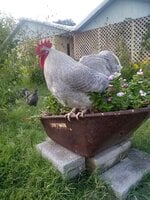
photo credit: @Felixr1998.
photo credit: @ChocolateWingTheRooster
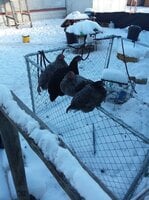
photo credit: @slordaz
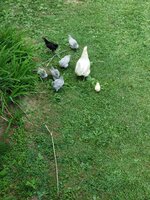
photo credit: @Mvan42.

photo credit: @Mvan42
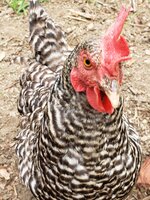
photo credit: @Mvan42
photo credit: @Julesstarohio56
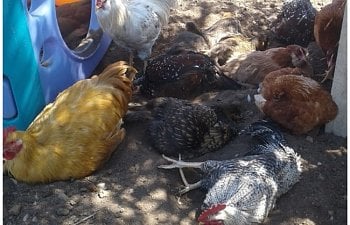
photo credit: @chrissynemetz
